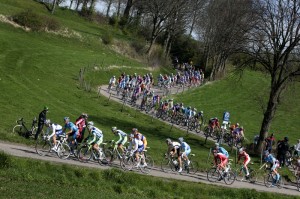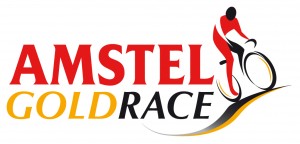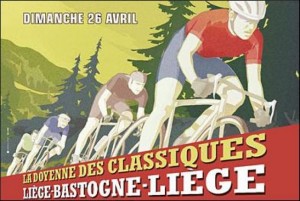 On Classic Roads II: Brussels – Maastricht offers you the best bits of pro cycling’s Spring Classics in Belgium & Holland: warming up on the hills of the Brabantse Pijl and Flèche Wallonne, then the more illustrious climbs in ‘La Doyenne des Classiques’ Liège-Bastogne-Liège and finally Amstel Gold Race across beautiful Limburg region.
On Classic Roads II: Brussels – Maastricht offers you the best bits of pro cycling’s Spring Classics in Belgium & Holland: warming up on the hills of the Brabantse Pijl and Flèche Wallonne, then the more illustrious climbs in ‘La Doyenne des Classiques’ Liège-Bastogne-Liège and finally Amstel Gold Race across beautiful Limburg region.
Moreover you explore northern Europe’s rich cultural heritage and its famous Art Cities: Brussels, Leuven, Huy, Liège and Maastricht. At last you will learn the difference between Brussels and Liège waffles.
On Classic Roads II can be combined with preceding On Classic Roads I: Paris to Brussels into a 2 week tours.
Duration: 7 days / 6 nights
Season: From June til September.
Dates: Guided group tours in 2012: 24 June, 1,8,15,22,29 July, 5,12,19,26 August.
Private guided tours & self-guided tours upon request.
Price
Level: 2
Rental Bike Details
Start: Brussels. Sunday 11:00 brunch in brasserie ‘Midi Station’ or 18:00 at B&B ‘LOCQ’. We arrange station and airport transfer upon request.
End: Maastricht. Saturday 10:00 check-out time. We arrange station and airport transfer upon request.
HIGHLIGHTS
- Discover 4 parliaments in 1 city
- Cycle around cathedrals, palaces and red light districts
- Drink a refreshing Hoegaarden beer at the brewery
- Climb the steep Mur de Huy, the Wall of Huy
- Learn the difference between Brussels and Liège waffles
- Ride mythical Côte de Stockeu and Côte de la Redoute
- Enjoy exquisite Belgian cuisine
ITINERARY
Sunday: 30km discovering Brussels
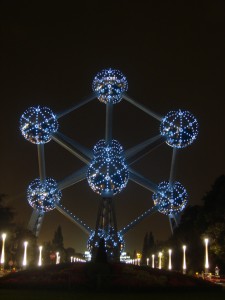 We meet at 11am for brunch at the brasserie ‘Midi Station‘ designed by Antoine Pinto. You find this biggest brasserie in Belgium inside Brussels South station, the main international train station with its Talys & Eurostar hub. If you arrive a bit early, take your time to stroll the exotic Midi Market around the station.
We meet at 11am for brunch at the brasserie ‘Midi Station‘ designed by Antoine Pinto. You find this biggest brasserie in Belgium inside Brussels South station, the main international train station with its Talys & Eurostar hub. If you arrive a bit early, take your time to stroll the exotic Midi Market around the station.
After brunch we take a 10min tram to our Bed & Breakfast. We get the bikes fitted and you make a little test ride. Then it is time to venture into the city. Brussels is the capital of Belgium and the European Union. There is no less than 4 parliaments in this city of 1 million inhabitants.
Brussels is a giddy lady chock-full of hidden corners. Atomium and Royal Palace. The little medieval streets around the Grand Place. Manneken Pis doing his eternal pee job. The silence of the Abbey of Ter Kameren next to the buzz of Place Flagey. Art Nouveau architecture in Ixelles and Uccle. Green relief between the beeches in majestic Forêt de Soignes. And back to our base via the European Quarters, Royal Palace and Parliaments. Time for an afternoon tea on the roof terrace of the Music Museum in the Old England. Next you are off for some wandering and souvenir hunt.
If you missed the day program, you can pick in at 6pm at the B&B LOCQ. Together we walk to the cosy restaurant around the corner ‘Henri‘. A hearty stoemp dinner brings our energy levels up to notch.
Monday: 65km of Brabantse Pijl from Brussels to Leuven
Le Pain Quotidien is Brussels’ premier place to score a slice of daily bread. Then time has come to leave the capital behind, along the regal Avenue de Tervueren. The Royal Museum of Central Africa, set in a splendid parc, is the first highlight of the day. From there, we’re out of the city and in the rolling countryside again. Little rural roads lead us to Overijse. Many Eurocrats and other expats found a home away from home in this beautiful region.
In Overijse we join the course of the Brabantse Pijl semiclassic for the local loop before the finish. The pros ride 6 sequences of Hagaard, Hertstraat, Ijskelderstraat and Schavei, for us 1 loop suffices. We also get a peek at the parcours of “the mother of all cyclocrosses”, the Druivenveldrit, but don’t want our bikes too muddy nor our clavicles too broken.
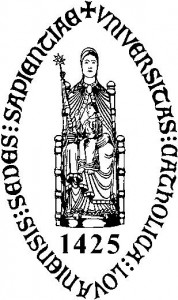 We then backtrack to the start of the Brabantse Pijl in Leuven through the Dijle valley and Doode Bemde nature reserve. There stands the old Burgundian university town of Leuven. Few towns in Flanders appeal to the imagination more than this haven for students, where history, culture, architecture, gastronomy and modern science form a compelling cocktail. Home both to the world’s larger beer brewer AB Inbev and the longest bar at the Oude Markt. Time for a ‘pinke’ lager. And some sightseeing if we still manage to stand up from our comfortable terrace seat.
We then backtrack to the start of the Brabantse Pijl in Leuven through the Dijle valley and Doode Bemde nature reserve. There stands the old Burgundian university town of Leuven. Few towns in Flanders appeal to the imagination more than this haven for students, where history, culture, architecture, gastronomy and modern science form a compelling cocktail. Home both to the world’s larger beer brewer AB Inbev and the longest bar at the Oude Markt. Time for a ‘pinke’ lager. And some sightseeing if we still manage to stand up from our comfortable terrace seat.
Tuesday: 75km from Leuven to Huy and its Mur
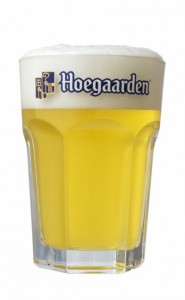 Byebye, Leuven, see you again ! For now the rich Hageland region is under our wheels. Miles and miles of pasture, wheat fields and orchards. In Hoegaarden we stop for a visit to the famous brewery to see what becomes of all this sweet wheat. A couple of years ago, AB Inbev tried to relocate the brewery but the specific taste proved too difficult to recreate. To the great relief of the Hoegaarden folks, who now serve us lunch with a refreshing Hoegaarden white beer. On south into Wallonia. We follow the RAVeL bicycle roads to Jodoigne and parade across the Grand’ Place and Pastur Castle raising above the Gèthe river. Then cutting it short through the Hesbaye region to the parcours of the Flèche Wallonne. La Flèche Wallonne is the traditional midweek semiclassic in the ‘Ardennes Triple’ Amstel Gold Race, Flèche Wallonne, Liège-Bastogne-Liège. With the finish on the terrifying Mur de Huy. Shift to your lightest gear !
Byebye, Leuven, see you again ! For now the rich Hageland region is under our wheels. Miles and miles of pasture, wheat fields and orchards. In Hoegaarden we stop for a visit to the famous brewery to see what becomes of all this sweet wheat. A couple of years ago, AB Inbev tried to relocate the brewery but the specific taste proved too difficult to recreate. To the great relief of the Hoegaarden folks, who now serve us lunch with a refreshing Hoegaarden white beer. On south into Wallonia. We follow the RAVeL bicycle roads to Jodoigne and parade across the Grand’ Place and Pastur Castle raising above the Gèthe river. Then cutting it short through the Hesbaye region to the parcours of the Flèche Wallonne. La Flèche Wallonne is the traditional midweek semiclassic in the ‘Ardennes Triple’ Amstel Gold Race, Flèche Wallonne, Liège-Bastogne-Liège. With the finish on the terrifying Mur de Huy. Shift to your lightest gear !
Wednesday: 77km Huy – Durbuy – Stavelot
From Huy on east, we cycle deeper into Wallonia. Rolling hills and ever denser pine forests colour our ride.
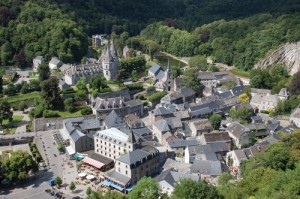 Durbuy. The smallest city on earth attracts droves of Japanese tourists. Known as the Smallest town on earth Durbuy is also one of the prettiest. The old town dates mainly from the 17 th century. Its pedestrian streets, winding between the ancient houses, are narrow and cobbled. A walk through this maze of streets will give you the impression that Durbuy is quite large, because one has a tendency to stop at every little shop. Most of the houses are built with the typical gray stone of the Ardennes. In the main street is the 16th century Grain Hall which now harbors the local tourist office. We Belgians also know Durbuy for its gastronomic delights. Did somebody say lunch time ?
Durbuy. The smallest city on earth attracts droves of Japanese tourists. Known as the Smallest town on earth Durbuy is also one of the prettiest. The old town dates mainly from the 17 th century. Its pedestrian streets, winding between the ancient houses, are narrow and cobbled. A walk through this maze of streets will give you the impression that Durbuy is quite large, because one has a tendency to stop at every little shop. Most of the houses are built with the typical gray stone of the Ardennes. In the main street is the 16th century Grain Hall which now harbors the local tourist office. We Belgians also know Durbuy for its gastronomic delights. Did somebody say lunch time ?
We arrive in Stavelot, where we pick in onto the Liège-Bastogne-Liège parcours. We don’t go all the way south to Bastogne, no Battle of the Bulge this time… (On 16 December 1944 the German artillery attacked the sparsely deployed American troops around Bastogne under the command of General “Nuts !” McAuliffe.)
Thursday: 95km from Stavelot (not Bastogne) to Liège
Liège-Bastogne-Liège is nicknamed La Doyenne, literally the world’s oldest classic bike race. In 1892, thirty-three riders started the first edition, which was an amateur race run by the Liège cycling union and the Pesant Club Liègois. Just 17 finished, all of whom were Belgian. Léon Houa, who came from Liège, won by 22 minutes, after 11 hours on the road. The second man, Léon Lhoest, came in 22 minutes after him, and the third, Louis Rasquinet, at 44 minutes.Riders were still arriving for another five hours. Houa won again the next year, this time by half an hour. He won again in 1894, by seven minutes. The 1894 race was for professionals, and the speed rose from 23.3 km/h to 25 km/h. The winner of the first Tour de France in 1903, Maurice Garin, came in fourth.
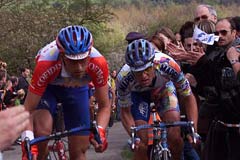 From the early morning we know what this race is about: côtes, steep climbs of a couple of km. In the first 10km we immediately tame the Côte de Stockeu (with the Stèle for the greatest cyclist ever, Eddy Merckx) and the Côte de la Haute-Levée. It has started ! And it won’t stop before we cross the finish line in Ans. Col du Rosier, Col du Maquisard, Mont-Theux, legendary Côte de la Redoute where late Frank Vandenbroucke released his devils in 1999) Côte de la Roche aux Faucons Côte de Saint-Nicolas.
From the early morning we know what this race is about: côtes, steep climbs of a couple of km. In the first 10km we immediately tame the Côte de Stockeu (with the Stèle for the greatest cyclist ever, Eddy Merckx) and the Côte de la Haute-Levée. It has started ! And it won’t stop before we cross the finish line in Ans. Col du Rosier, Col du Maquisard, Mont-Theux, legendary Côte de la Redoute where late Frank Vandenbroucke released his devils in 1999) Côte de la Roche aux Faucons Côte de Saint-Nicolas.
The city of Liège is spectacularly set on the borders of the Meuse river. The strategic position of Liège has made it a frequent target of armies and insurgencies over the centuries. It was fortified early on with a castle on the steep hill that overlooks the city’s western side. From 985 till 1794 Liège was the capital of the prince-bishopric and thus served as a major intellectual and ecclesiastical centre. In 1830 the Belgian Revolution led to the establishment of an independent, Catholic and neutral Belgium which incorporated Liège. After this, Liège developed rapidly into a major industrial city which became one of continental Europe’s first large-scale steel making centres.
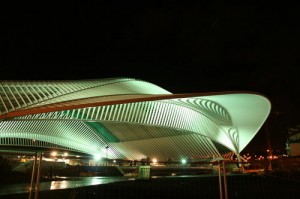
After World War II, Liège began to suffer from a relative decline of its industry, particularly the coal industry. Liège has shown some signs of economic recovery in recent years, symbolised by the futuristic
Guillemins TGV station by Santiago Calatrava.
Le Carré, a 100 × 100 m square area, is renowned for its bustling nightlife, with many lively pubs which remain open until the last customer leaves (typically around 6 am). On Sundays the “Batte” outdoor market goes along the Meuse River
The Province of Liège will host the Grand Départ (official start) of the 2012 Tour de France, which was also the case in 2004. The prologue will take place on Saturday the 30th of June in the streets of the city centre of Liège. It will be followed the next day by the first stage of the race from Liège to Seraing and then the second stage the day after which will set off from Visé. Liège is the only city that can boast having hosted stages of all three cycling Grand Tours, Tour de France, Giro d’Italia and Vuelta a España.
Friday: 80km from Liège to Maastricht
We say goodbye to Liège and head north to Maastricht along the borders of the stately Maas river, forming the border between Belgium and The Netherlands. In Lanaken we climb out of the river valley to join the Amstel Gold Race Parcours. The race is famous for its narrow winding roads and short steep climbs. But it is the beautiful Limburg countryside stealing the show. Near Simpelveld we can almost touch the German border.
The Amstel Gold Race is the last leg of the ‘Ardennes Week’. Though geographically distinct than the nearby Belgian Ardennes, the Limburg region serves up a similarly endless menu of steep, narrow climbs. Any race named after a beer should be a big party and tens of thousands of beer-guzzling Dutch fans turn up to line the endless string of bergs and clog outdoor beer gardens to cheer on the pack as they ply treacherously narrow roads. The course starts in the main square at Maastricht and, since 2003, ends atop the Cauberg climb just above Valkenburg (site of another huge party). The route map looks like a plate of spaghetti, with four loops tracing back and forth over deceptively steep climbs. An endless string of 31 climbs are wickedly steep, with Keutenberg featuring ramps as steep as 20 percent. Coupled with the narrow roads and strong winds, Amstel is one of the season’s most nerve-wracking races.
The 2012 UCI Road World Championships follows the same course before reaching the 16,5km fixed circuit that was also the stage of the 1998 Worlds won by Swiss Camenzind.
Saturday: Maastricht
The tour is finished but you should still take your time to visit Maastricht, the oldest city in The Netherlands. Maastricht is a lively city of history, culture, local folklore and commerce. Known for its picturesque squares, romantic streets, and historical buildings it is also a perfect place for souvenir hunting.
On Sunday you can head back to Liège for the La Batte market.

